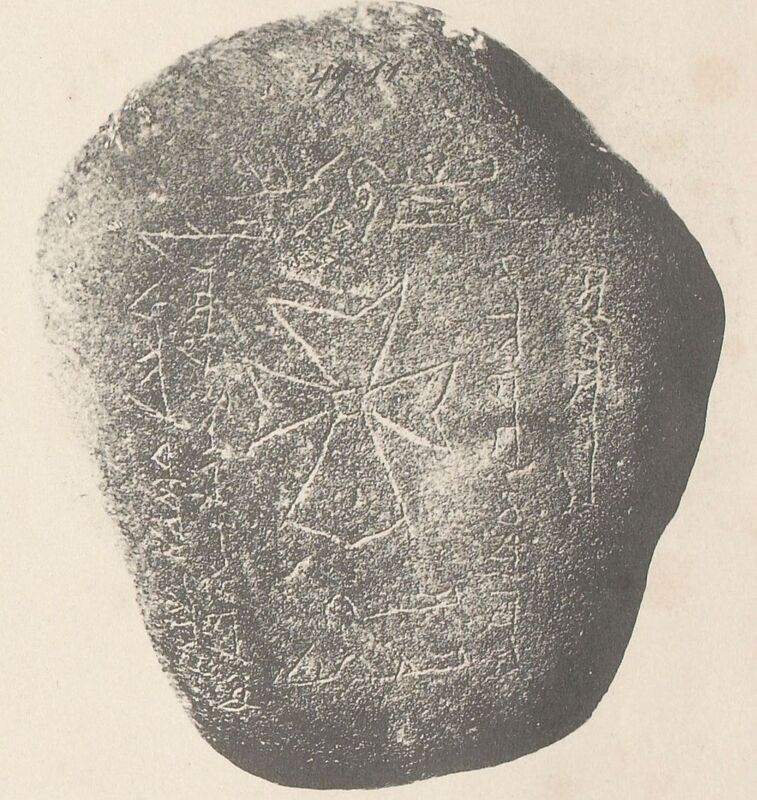Gravestone of a bubonic-plague victim
Type:
Grave markers,
Cemeteries
Date:
1338
Location or Findspot (Modern-Day Country):
Kyrgyzstan
Medium:
Stone
Description:
This grave marker, found in the late nineteenth century, bears a cross and inscriptions in Syriac that reads:
Sanmaq's was one of 467 precisely dated grave markers in two village cemeteries in northern Kyrgyzstan. Theys range in date from 448 to 1345 CE, but 118 of them date to 1338 or 1339. DNA extracted from teeth found in the tombs (not that of Sanmaq) reveals that the deaths were due to Yersinia pestis—bubonic plague—which devastated Eurasia in the years after 1338. Because the plague genome diversified in the following years, these Kyrgyzstan trading communities must have been at or near the epicenter of the outbreak. This proves that the plague that killed a high percentage of the late-medieval population originated in Central Asia.
In the year 1649 [Seleucid Era], and it was the year of the Tiger, bars in Turkic. This is the tomb of the believer Sanmaq. Died of pestilence.The combination of the Seleucid Era (a calendar that began in 312 BCE, used by Syriac Christians) and the twelve-year animal cycle (used by Turkic peoples) yields the date 1338 CE. Sanmaq was a Christian of the Church of the East who spoke a Turkic dialect; Syriac was the community's main liturgical language.
Sanmaq's was one of 467 precisely dated grave markers in two village cemeteries in northern Kyrgyzstan. Theys range in date from 448 to 1345 CE, but 118 of them date to 1338 or 1339. DNA extracted from teeth found in the tombs (not that of Sanmaq) reveals that the deaths were due to Yersinia pestis—bubonic plague—which devastated Eurasia in the years after 1338. Because the plague genome diversified in the following years, these Kyrgyzstan trading communities must have been at or near the epicenter of the outbreak. This proves that the plague that killed a high percentage of the late-medieval population originated in Central Asia.
Relevant Textbook Chapter(s):
9
Repository and Online Resources:
• Read the study about the DNA from the Kyrgzystan cemeteries in Nature (15 June 2022)
• See a similar grave marker in the British Museum (dated 1288/89).
Image Credits:
A. S. Leybin, August 1886

